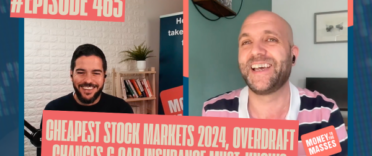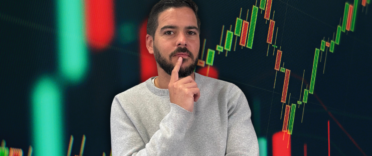The 129th episode of my weekly YouTube show where I discuss what is happening in investment markets and what to look out for. This week I talk about the factors that are creating fear in bond and equity markets.
Each show lasts between 5-10 minutes and is aimed at DIY investors (including novices) seeking contemporary analysis to help them understand how investment markets work.
Subscribe to my YouTube channel to receive my weekly analysis of investment markets or alternatively, you can listen via my weekly Midweek Markets podcast below.
Midweek Markets weekly podcast
Other ways to watch, listen and subscribe
You can listen to other episodes and subscribe to the show by searching 'Money to the Masses' on Spotify or by using the following links:
Abridged transcript - Midweek Markets episode 129
Is this what bond & equity markets fear most
There are two things weighing on markets this week, especially in Europe, and that is what is happening with monetary policy in the US but crucially the rise in COVID cases in Europe.
The week had got off on a back foot when US President, Joe Biden, nominated the current US Federal Reserve Chair, Jerome Powell, for a second term. Bond markets especially didn’t like this as they see Powell as probably the most hawkish candidate, likely to pursue a more aggressive route on monetary policy - raising interest rates and tapering QE.
If you look at the chart of the 10 year US treasury yield on your phone you will see that it popped back to its October high of 1.67%. It will be interesting to see if the yield finally breaches this recent high otherwise it could set up a potential double/triple top from a technical point of view which would be negative for yields. A deciding factor could be the latest US inflation figures due out today - in what seems like a never ending cycle of news and reaction to inflation expectations.
In the UK bond yields also climbed higher this week with the 10 year UK gilt yield back above 1%. But it's a slightly more mixed picture in Europe. Last week we started to see signs of divergence with bond yields falling in France and Germany, against a backdrop of rising yields in the US - but the contrast is less stark this week.
Playing into the more muted yield picture in Europe is the backdrop of rising COVID cases on the continent and restrictions and lockdowns being reintroduced. Both are bad for economic growth, which in turn is positive for bonds.
Interestingly the concerns over COVID at the start of the week had seen investors start to behave as they had back in February 2020, seeking haven assets (such as bonds so driving up their prices and driving down their yields) as well as technology stocks.
But the Powell nomination is a competing narrative. Another four years at the helm of the most influential central bank in the world sent equity markets into a tailspin too, after bond markets had started wobbling. The impact was to drive investors away from perceived haven assets such as bonds and gold and also away from tech stocks. All of these tend to underperform in a rising rate environment. Since the start of the week, gold, which had been enjoying a period of strength, has tumbled more than 2.5%.
The market seems to be more scared of Powell and a Fed and aggressive monetary policy than of another wave of COVID.
The VIX (the market fear gauge) has today broken above 20 while the equivalent on the Nasdaq 100 has hit 25. But these aren’t extreme levels yet, merely inline with their long time averages. Indeed the CNN Fear and Greed Index which is an indicator made up of 7 factors that aims to determine whether fear or greed is driving markets - has made a notable shift. From extreme greed a week ago back towards a more balanced fear/greed make-up. Panic isn’t driving the market yet despite the headlines you may be reading.
The FTSE 100 is still hovering around 7300 and while the tech-heavy Nasdaq-100 is down almost 3% this week, the Dow and S&P 500 are down less than 0.5%. In Europe the picture is a little more red with the German DAX down 2.3% in a week while the Eurostoxx 50 is down nearly 3%. Value has outperformed growth in recent days since the Powell nomination.
But it’s not disastrous, and the uptrends in most markets remain intact. Developed world equity markets have had a good run since the September lows, a pullback is inevitable. But the return of Powell has reignited the strength of the dollar. This is something to keep an eye on as it could create a headwind for US equities. It certainly already has for emerging market equities, with many EM funds falling 5% in recent days.
It’s a trend to keep an eye on in the coming days along with the rising COVID-19 numbers in Europe. But right now, markets seem to be most frightened of what Powell and the Fed might do that could bring everything crashing down.



